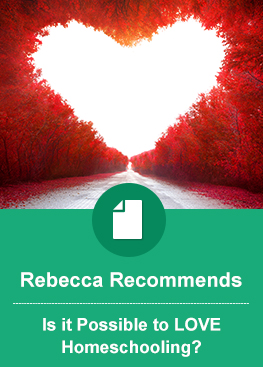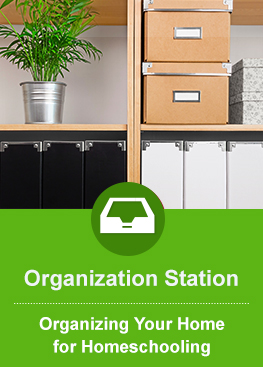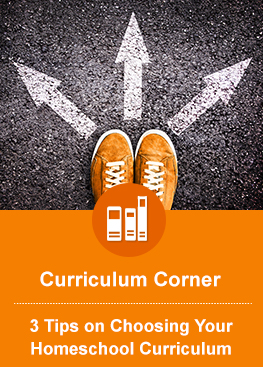Inspiration Station
August 2017, Issue 13
“5 Things to Do Before You Start Homeschooling”
by Homeschool.com’s Rebecca Kochenderfer
If you’re new to homeschooling, you may wonder where to begin and how you’ll make sure you cover your bases. It seems like there’s so much information out there (there is). And so many choices to make (there are)! This is a wonderful thing, though. Imagine boxing yourself into only one way of doing things and having no choice in the matter. Once you prepare yourself to homeschool, you’ll be well on your way to a great homeschooling year.
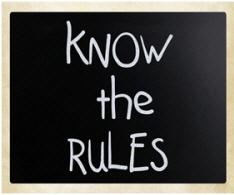 Learn the laws of your state. One of the very first things a homeschooling parent must consider and understand is the law. While it’s legal to homeschool in every state in America, the homeschooling laws do vary from state to state. HSLDA has put together a nice map that summarizes the laws in each state. Their map is color coded; some colors mean the laws in those states are more stringent than the laws in other states. While the laws at HSLDA’s site are comprehensive, one of the easiest ways to understand all your options is to talk with local homeschoolers to see how they abide by the laws. Learn the laws of your state. One of the very first things a homeschooling parent must consider and understand is the law. While it’s legal to homeschool in every state in America, the homeschooling laws do vary from state to state. HSLDA has put together a nice map that summarizes the laws in each state. Their map is color coded; some colors mean the laws in those states are more stringent than the laws in other states. While the laws at HSLDA’s site are comprehensive, one of the easiest ways to understand all your options is to talk with local homeschoolers to see how they abide by the laws.
-
 Find local support groups. At some point in your homeschooling journey, you may feel alone or as if you don’t know anyone else who homeschools. Though online it’s easy to find others who homeschool (such as on our Facebook page or our community forum), finding support for homeschooling in real life might take a little longer. We’ve put together an easy-to-use resource for you to find the local support you’ll need. A big benefit to in-person support is that you’ll find people you can meet with on a regular basis. Also, those same people will be able to help you navigate the homeschooling laws and give you ideas on how to make sure you operate your homeschool in a way that meets your state’s guidelines. Find local support groups. At some point in your homeschooling journey, you may feel alone or as if you don’t know anyone else who homeschools. Though online it’s easy to find others who homeschool (such as on our Facebook page or our community forum), finding support for homeschooling in real life might take a little longer. We’ve put together an easy-to-use resource for you to find the local support you’ll need. A big benefit to in-person support is that you’ll find people you can meet with on a regular basis. Also, those same people will be able to help you navigate the homeschooling laws and give you ideas on how to make sure you operate your homeschool in a way that meets your state’s guidelines.
- Determine your child’s learning style. With so many ways of learning available these days, you might be wondering how to know which “style” best fits or describes your child. The three most common categories for classifying learning styles are visual, auditory, and kinesthetic. Visual means a person does better seeing things (animations, videos, images, etc.). Auditory learners do best when they can hear things (lectures, sermons, audiobooks, etc. Kinesthetic learners are the doers (hands-on, touching, using manipulatives, etc.). How can you determine what your child’s learning style is? One quick way is to have your child take a FREE learning styles quiz. This quiz takes about five minutes to complete and will give you results that will benefit you for years to come.
- Assess your teaching style. Once you’ve determined your child’s learning style, it’s time to see if your teaching style matches your child’s learning style. Don’t panic if the two don’t match; this is very common! Often, the way we’d like to teach or feel we learn best doesn’t line up with how our children learn best—and that’s okay. Since the goal is for our children to learn, the best way we can provide a personalized education is to try to “meet in the middle.”If you have an auditory learner but you’re a visual person yourself, consider reading texts aloud to your child or purchasing the audiobook version of your chosen curriculum. It may not suit you if you were trying to understand the material, but it’s your child who needs to learn history, science, etc.—not you. At the same time, though, you may feel like you need to understand it if you’re going to help your child. This is where meeting in the middle comes into play. If you can find something that suits both of your learning styles (or maybe a curriculum that’d suit you and that has an extra component that best suits your child), go for it! But if costs prohibit buying anything extra and you must choose, it might be best to go with what suits your child.
-
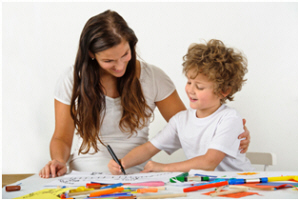 Decide on your homeschooling style. With so many choices out there—from Charlotte Mason and Classical to Traditional and Unschooling—new homeschoolers (and even veterans at times) sometimes feel totally lost in trying to decide on a method that suits their child. This is another area where you might have to meet in the middle with your child.If you feel drawn to the coziness of narrations and nature studies but your child is just a “get it done” type of person who would cringe at the thought of another read-aloud, then the Charlotte Mason approach may need some tweaking if it’s going to work in your household. Maybe instead of having read-alouds, you could assign the reading as independent reading. Instead of having all oral narrations for history, assign some written narrations as well. Your child will feel as though he’s able to just sit down and get it done without waiting until you’re available to listen to an oral narration.If you’re drawn to Unschooling but your child would really like a more traditional school experience, then really take this into consideration. After all, Unschooling is largely about the child learning what he wants and when he wants. Though it may not be what all the other Unschoolers you know are doing, if textbooks are what your child would like, give textbooks some consideration. It doesn’t have to look like it did when you were in school; textbooks are simply a resource. But again, it’s your child’s personalized education you’re trying to implement. Decide on your homeschooling style. With so many choices out there—from Charlotte Mason and Classical to Traditional and Unschooling—new homeschoolers (and even veterans at times) sometimes feel totally lost in trying to decide on a method that suits their child. This is another area where you might have to meet in the middle with your child.If you feel drawn to the coziness of narrations and nature studies but your child is just a “get it done” type of person who would cringe at the thought of another read-aloud, then the Charlotte Mason approach may need some tweaking if it’s going to work in your household. Maybe instead of having read-alouds, you could assign the reading as independent reading. Instead of having all oral narrations for history, assign some written narrations as well. Your child will feel as though he’s able to just sit down and get it done without waiting until you’re available to listen to an oral narration.If you’re drawn to Unschooling but your child would really like a more traditional school experience, then really take this into consideration. After all, Unschooling is largely about the child learning what he wants and when he wants. Though it may not be what all the other Unschoolers you know are doing, if textbooks are what your child would like, give textbooks some consideration. It doesn’t have to look like it did when you were in school; textbooks are simply a resource. But again, it’s your child’s personalized education you’re trying to implement.
Embarking on homeschooling is more than just taking a different educational approach than most; it’s a lifestyle approach. Once you learn the laws for your area and determine both your teaching style and your child’s learning style, you’ll be on the road to a path you’ll never regret! |

 Learn the laws of your state. One of the very first things a homeschooling parent must consider and understand is the law. While it’s legal to homeschool in every state in America, the homeschooling laws do vary from state to state. HSLDA has put together
Learn the laws of your state. One of the very first things a homeschooling parent must consider and understand is the law. While it’s legal to homeschool in every state in America, the homeschooling laws do vary from state to state. HSLDA has put together  Find local support groups. At some point in your homeschooling journey, you may feel alone or as if you don’t know anyone else who homeschools. Though online it’s easy to find others who homeschool (such as on
Find local support groups. At some point in your homeschooling journey, you may feel alone or as if you don’t know anyone else who homeschools. Though online it’s easy to find others who homeschool (such as on  Decide on your homeschooling style. With so many choices out there—from Charlotte Mason and Classical to Traditional and Unschooling—new homeschoolers (and even veterans at times) sometimes feel totally lost in trying to decide on a method that suits their child. This is another area where you might have to meet in the middle with your child.If you feel drawn to the coziness of narrations and nature studies but your child is just a “get it done” type of person who would cringe at the thought of another read-aloud, then the Charlotte Mason approach may need some tweaking if it’s going to work in your household. Maybe instead of having read-alouds, you could assign the reading as independent reading. Instead of having all oral narrations for history, assign some written narrations as well. Your child will feel as though he’s able to just sit down and get it done without waiting until you’re available to listen to an oral narration.If you’re drawn to Unschooling but your child would really like a more traditional school experience, then really take this into consideration. After all, Unschooling is largely about the child learning what he wants and when he wants. Though it may not be what all the other Unschoolers you know are doing, if textbooks are what your child would like, give textbooks some consideration. It doesn’t have to look like it did when you were in school; textbooks are simply a resource. But again, it’s your child’s personalized education you’re trying to implement.
Decide on your homeschooling style. With so many choices out there—from Charlotte Mason and Classical to Traditional and Unschooling—new homeschoolers (and even veterans at times) sometimes feel totally lost in trying to decide on a method that suits their child. This is another area where you might have to meet in the middle with your child.If you feel drawn to the coziness of narrations and nature studies but your child is just a “get it done” type of person who would cringe at the thought of another read-aloud, then the Charlotte Mason approach may need some tweaking if it’s going to work in your household. Maybe instead of having read-alouds, you could assign the reading as independent reading. Instead of having all oral narrations for history, assign some written narrations as well. Your child will feel as though he’s able to just sit down and get it done without waiting until you’re available to listen to an oral narration.If you’re drawn to Unschooling but your child would really like a more traditional school experience, then really take this into consideration. After all, Unschooling is largely about the child learning what he wants and when he wants. Though it may not be what all the other Unschoolers you know are doing, if textbooks are what your child would like, give textbooks some consideration. It doesn’t have to look like it did when you were in school; textbooks are simply a resource. But again, it’s your child’s personalized education you’re trying to implement.